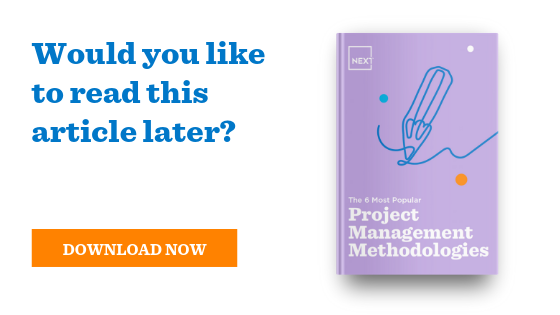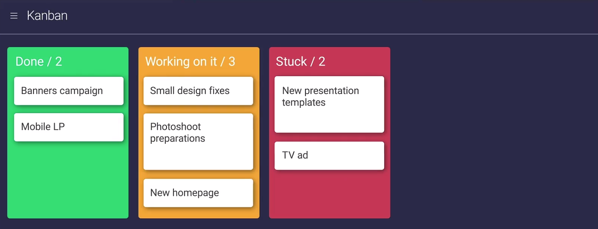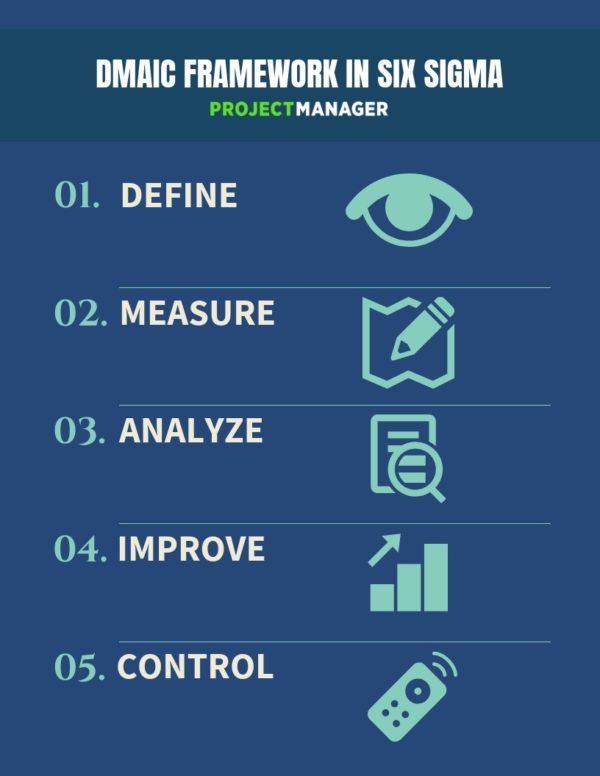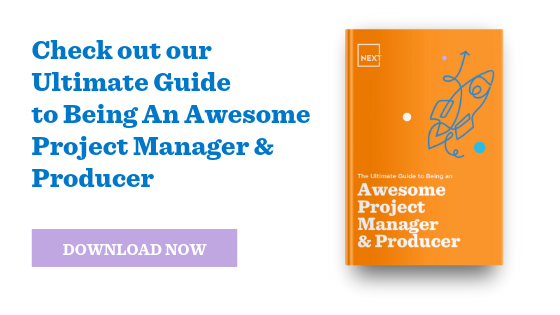Pranil Chandra August 5, 2019
Speak to a Print Expert
A project management methodology is essentially a set of guiding principles and processes for managing a project.
From Kanban to Six Sigma, there are plenty of popular frameworks and philosophies that successful project managers are using to stay organised.
We’ll cover the most widely used PM methodologies in this article, including Kanban, Scrum, and Six Sigma.

It’s likely best to start with Agile, as it’s more of a philosophy that supports some of the other PM approaches we’ll cover.
This methodology was first created for software development, where the Waterfall method (we’ll cover that shortly), wasn’t quite cutting it.
The purpose of Agile is to find better ways to develop your product by providing a clear, measurable structure that fosters team collaboration.
The key values of Agile are:
Agile understands that projects ebb and flow over time, and it accounts for that in its principles. The focus with Agile is always on people. The team working on the project should be supported, trusted, and motivated, and the end customer should be met with frequently.

Monday.com supports Agile – here is a project board example
Agile is best suited for complex projects that require flexibility. Digital project management tools that support agile include Monday.com, Airtable, Smartsheet, Zoho, Agilean, Wrike, Trello, Jira, Planbox, and Asana.
Agile is technically a methodology that has other methodologies in it – for example, Kanban and Scrum both follow the principles of Agile.
Let’s cover those to give you a better idea of how these methodologies interact with each other.
Kanban has a rich history, developed in the 1940s by Taiichi Ohno, the Industrial Engineer and Business for Toyota in Japan. Kanban translates to “billboard” in Japanese, and that’s really a perfect way to describe this popular project management methodology.
Kanban is a visual system that allows you to see your project and all of the work in process. The old school method was an organised post-it note system on the wall, but today, there are various tools that allow you to use Kanban digitally.
For example, Trello is a popular option for Kanban users. Check out this Trello Kanban Board, which shows you ‘To Do” items, “Development” items, “Testing” items, and “Done” items.
Monday.com is another PM tool that gives you a Kanban view.

Kanban isn’t solely focused on deadlines. Instead, the focus is on each stage within the project and how everything is connected. As a result, your project as a whole should be well-executed.
When you implement the Kanban methodology, you’re moving from left to right. Ideally, the left-most side of the board is the “To Do” list, while the right-most side of the board is the “Done” list. Each list should have several cards in it outlining single tasks.
As a whole, the board gives a complete view of every task involved as well as their progress at any given time. This allows project managers to anticipate bottlenecks that could slow down the entire project.
Another important principle of the Kanban method is to limit the work in progress. This encourages the team to complete the task at hand before starting a new one. This creates momentum.
If you’re a project manager for a company that creates complex products, Scrum could be the agile framework for you.
The official Scrum Guide explains that scrum is simple to understand, yet difficult to master.
A “Product Owner” creates the product backlog, or a prioritised wishlist. During “Sprint Planning,” the team pulls a chunk from the top of that list and decides how to complete it.
The team has a set timeframe, called a “Sprint” to complete their work. They meet in a “Daily Scrum” to keep the work moving forward. Along the way, the “Scrum Master” keeps the team focused.
At the end of the Sprint, the work should be potentially ready to ship. The team conducts a “Sprint Review” on the product. They also do a “Sprint Retrospective” where the Scrum Team inspects itself and creates a plan for improvements during the next Sprint.
Then, they choose the next chunk of the backlog, and the cycle repeats.
With Scrum, the goal is complete products in a timely, quality way. You can read the full Scrum Guide here.
There are several PM tools built for Scrum users, such as Clarizen, GitScrum, and ScrumDo.

The Waterfall, also called Phased, project management methodology is a linear, or sequential process. Essentially, there are a series of phases that take you from the project’s start to the project’s end.
You cannot be in multiple phases at once – you must complete the phase you are in, and you also can’t go back to a previous phase. The only way to revisit a previous phase is to start over.
The Waterfall approach sounds pretty strict, and that’s because it has to be. For example, let’s say a contractor is managing the construction of a new house. You can’t put up drywall if you haven’t framed the house. Each phase must happen on its own, and that’s just out of necessity.
Once the flooring is in, you can’t really go back and revisit the concrete slab.

Waterfall example from Team Gantt
As you can tell, the Waterfall methodology requires a ton of planning, and documentation during the process is a key part of implementing the system.
The industry that benefits most from the Waterfall approach is manufacturing, though when the end product’s requirements are fixed yet time and money are variable, Waterfall can work especially well.
The Project Management Institute (PMI) created the Project Management Body of Knowledge (PMBOK), which is a set of five phases to follow:
Similar to Waterfall, you follow these 5 phases from beginning to end.
There’s an entire certification behind this methodology, and it’s highly respected in the PM field. However, this certification is more popular in the USA than it is in Australia or other countries across the globe.
Certifications from PMI require a ton of time and effort, with many of their programs requiring at least 7,000 hours of project management experience to even apply.
Those interested in the PMBOK methodology would likely do well with Waterfall, as both follow the same approach to managing complex projects.
Six Sigma is a management philosophy that can help increase profits while decreasing expenses.
First, you begin by keeping track of the numbers: how much are you spending and buying?
With Six Sigma, you start tracking the preventable items, such as project delays or defects. Then, you analyse what you’ve found. From there, you’re going to make improvements. That’s really the Six Sigma process.
Identify the problem, make improvements, sustain those improvements, and keep up the progress. Rinse and repeat.
The Six Sigma lingo for this process is “DMAIC,” which stands for Define, Measure, Analyse, Improve, and Control.

Six Sigma process, photo credit ProjectManager.com
What makes Six Sigma different from other project management methodologies out there is that it focuses heavily on reducing errors and defects. It’s used in manufacturing, where variability in production can occur, and minimising that can have a huge impact on profits and expenses.
The actual term “Six Sigma” has roots in manufacturing, because the maturity of a manufacturing process can be described by a sigma rating, or the percentage of defect-free products it makes.
If you’re the project manager or producer for a company that produces complex products – or even just a company that’s having a hard time increasing profits when compared to expenses – Six Sigma could be your saving grace.
These aren’t the only PM methodologies out there – they’re just the most popular ones used by top project management professionals today. Other approaches, such as Lean, are still relevant, but they’re just not as applicable for most teams who work digitally.
Whichever PM methodology fits your team the best, there’s sure to be a digital tool to help you stay organised and follow the approach.

You might also like:
We'd love to send you innovative tips, news and offers from the world of print and marketing.
Client experience officers are available to answer any questions you have. Use the form below to quickly let us know what you need!